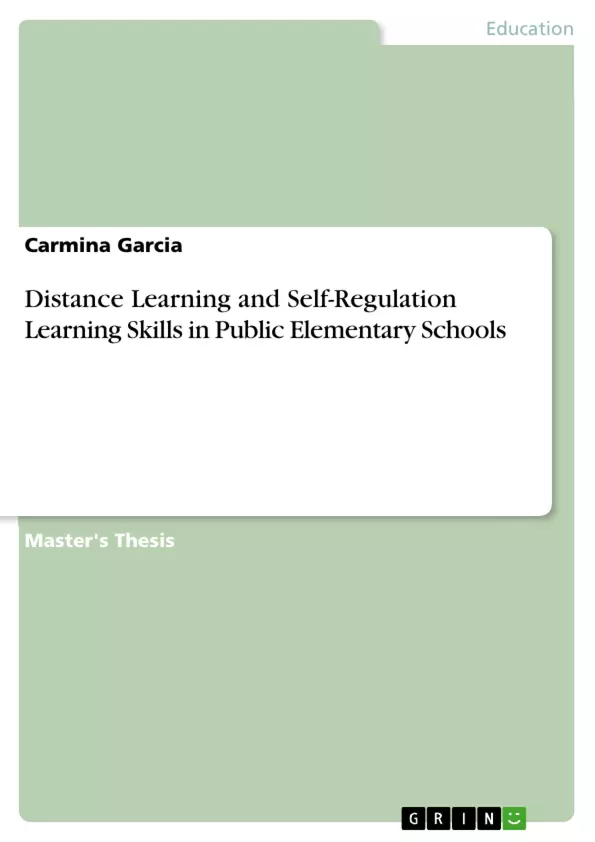In this 21st century world, the teaching and learning environment has put forth a number of innovations and some of these involve the use of technology through distance learning. Contrary to a generally accepted observation, Clark (2020) argues that distance education is not a very new model of education. As cited in Sari and Nayor (2020), the emergence of distance education applications dates back to about 300 years. One of the first known applications is weekly lessons delivered to students in the USA via mail. As well as countries such as England, Switzerland, and Australia have provided distance education with different tools (mail, radio, television etc.) years ago due to geographically dispersed and sparse population distribution.
This study is a descriptive-correlational research which examined the significant difference between the extent of use of distance learning and self-regulation learning skills and its effect to the demographic profile of the teacher-participants in public elementary schools in the District of Alfonso Cavite. Specifically, the study reported the demographic profile of the teacher-participants in terms of: age, sex, civil status, the highest educational attainment and length of years in teaching; examined the extent of use of distance learning in terms of: Access, Interaction, Response and Results; level of the students’ self-regulation learning skills in terms of: goal setting, environment structuring, task strategies, time management, help-seeking and self-evaluation; and investigated the significant difference among these variables’ extent of use of distance learning and level of students’ self-regulation learning skills when grouped according to demographic profile: and determine as well as the significant difference between the extent of use of distance learning and level of students’ self-regulation learning skills.
Inhaltsverzeichnis (Table of Contents)
- INTRODUCTION
- REVIEW OF RELATED LITERATURE
- METHODOLOGY
- RESULTS AND DISCUSSION
- Demographic Profile of the Teacher-Participants
- Extent of Use of Distance Learning
- Level of Students’ Self-Regulation Learning Skills
- Relationship between Extent of Use of Distance Learning and Level of Students’ Self-Regulation Learning Skills
- SUMMARY, CONCLUSIONS AND RECOMMENDATIONS
- REFERENCES
- APPENDIX
Zielsetzung und Themenschwerpunkte (Objectives and Key Themes)
This study aims to explore the relationship between the extent of use of distance learning and the level of students' self-regulation learning skills in public elementary schools in the District of Alfonso, Cavite. Specifically, the study aims to identify the demographic profile of teacher-participants, examine the extent of use of distance learning in terms of access, interaction, response, and results, and analyze the level of students' self-regulation learning skills in terms of goal setting, environment structuring, task strategies, time management, help seeking, and self-evaluation. The study also seeks to determine if there are significant differences in the extent of use of distance learning and the level of students' self-regulation learning skills when grouped according to demographic profiles, as well as to establish the overall relationship between the two variables.
- The extent of use of distance learning in public elementary schools in the District of Alfonso, Cavite.
- The level of students' self-regulation learning skills in public elementary schools in the District of Alfonso, Cavite.
- The demographic profile of teacher-participants in relation to the use of distance learning and student self-regulation skills.
- The relationship between the extent of use of distance learning and the level of students' self-regulation learning skills.
- The implications of the study for improving distance learning practices and supporting self-regulation learning among students.
Zusammenfassung der Kapitel (Chapter Summaries)
The introduction chapter provides a background to the study, highlighting the importance of distance learning in today's educational landscape and the significance of student self-regulation skills in facilitating effective learning. The chapter also outlines the research questions and objectives of the study. The review of related literature chapter explores existing research on distance learning, self-regulation learning, and their interrelationship. It examines various theories and models related to these concepts, as well as previous research findings that contribute to the understanding of the study's topic. The methodology chapter details the research design, population and sample, data collection methods, and data analysis techniques employed in the study. It provides a comprehensive overview of the procedures used to collect and analyze the data relevant to the research questions.
The results and discussion chapter presents the findings of the study, analyzing the demographic profile of the teacher-participants, the extent of use of distance learning, and the level of students' self-regulation learning skills. The chapter also examines the relationship between these variables and discusses the implications of the findings for distance learning practices and self-regulation support in educational contexts.
Schlüsselwörter (Keywords)
The research focuses on the use of distance learning, self-regulation learning skills, teacher-participants, student self-regulation, and the demographic profile of teachers. The study explores the relationship between these key concepts, seeking to uncover the impact of distance learning on student self-regulation skills and the role of teacher characteristics in facilitating effective distance learning practices.
- Quote paper
- Carmina Garcia (Author), 2023, Distance Learning and Self-Regulation Learning Skills in Public Elementary Schools, Munich, GRIN Verlag, https://www.grin.com/document/1459941



